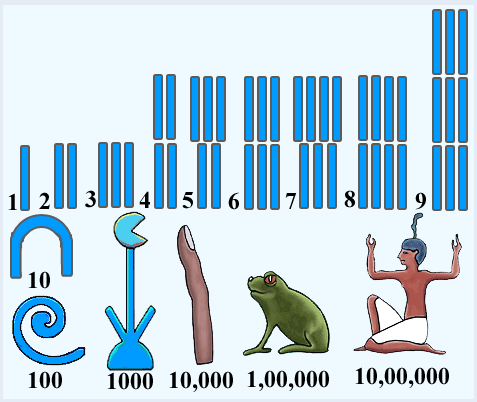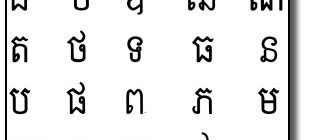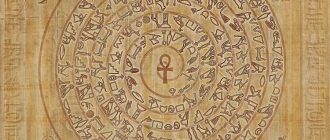Want to learn more about Egyptian numerals? Read on for facts and info on this historic system of writing numbers developed in ancient Egypt…
The Egyptians developed their first formalized system for numerals back in the first millennium A.D. The Egyptian numeral system was primarily a decimal system wherein which numerals would be rounded off to the highest relative power. The numeral system was written down in the form of hieroglyphics.
The numerals were written down in hieratic order. This form would indicate the exact finite series of the notation. This would be ciphered on a one-to-one basis with the Egyptian alphabet. The numeral system made use of bases of 10.
Egyptian Numerals Values
The Egyptians had developed specific hieroglyphics to denote specific values. For example a single stroke would be used to denote the value of one whereas the heel bone was meant to represent the value of hundred and similarly the 10,000 value was depicted by a coil of rope. The highest value denoted in the Egyptian numeral system was that of 1 million. The hieroglyph used to depict 1 million was a man that had both his hands raised up in the air. In order to express the multiples of these values the Egyptians would just repeat the hieroglyph for the number of times that it was required.
When it comes to Egyptian numerals the hieroglyphics could be written in both directions. Some archaeological findings have also shown that Egyptians would write their numerals vertically from left to right and top to down.
Use of fractions
The Egyptian numeric system also allowed rational numbers to be expressed as sums of unit fractions. That is they would be sums of reciprocals derived from positive integers with the exception of fractions like 2/3 and ¾. The Egyptian hieroglyph used to depict a fraction that was designed in the shape of a mouth.
Use of Egyptian Numerals
When it came to office work papyrus was the medium of choice for recording numerals. This was a much easier alternative than carving into hard stone. The bulk of these texts had been recorded using a formalized hieratic system. Examples of such texts date back to the Early Dynastic Period.
One of the things that was unique about the Egyptian numeric system was the fact that the numerals were actually ciphered, meaning that every numeral actually had an Egyptian letter alternative. This was the first time in history that such a complex and extensive system of recording numerals had been developed. Following the development of this system the Greeks were quick to take it on and adapt it to their language.
Egyptian numerals reached their zenith during the Middle Egyptian period. They were made up of hieroglyphs for which Coptic equivalents were later developed. Today the Coptic equivalents help Egyptologists to decipher the precise pronunciation of the original Egyptian numerals. However as is the case with phonetic hieroglyphs deciphering the exact pronunciation of Egyptian numerals is virtually impossible and a lot is based on conjecture based upon the limited clues that we have access to.





